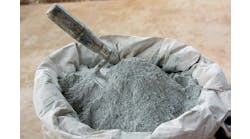Andrew Bond is the author/editor of the INSIDER, a monthly newsletter published in the U.K. We reprint excerpts of the INSIDER newsletter with permission. Any opinions express therein are Andrew Bonds and do not necessarily reflect those of Control magazine or ControlGlobal.com.
Nearly 20 months after the HART Communications Foundation (HCF) released HART 7 and with it WirelessHART, the ISA100 Standards Committee on Wireless Systems for Automation has voted to approve ISA100.11a, 'Wireless Systems for Industrial Automation: Process Control and Related Applications.' This latest draft, which followed two earlier rounds of balloting and refinement, gained the approval of 81% of the voting members of the committee and 23 of the 24 end-user members. This is not however the end of the process. Comments received in the latest voting will now be reviewed for applicability by ISA100 co-chairs Pat Schweitzer of ExxonMobil and Wayne Manges of Oak Ridge National Laboratory. The draft then has to be approved by the ISA Standards and Practices Board and ratified by the American National Standards Institute (ANSI) before final publication by ISA as a standard, which it is anticipated will take place in August of this year.
The aim of ISA100.11a is to provide reliable and secure wireless operation for non-critical monitoring, alerting, supervisory control, open- and closed-loop control applications in the process industries where typical latencies of 100ms are acceptable, although there is some provision for shorter latencies. It defines the protocol suite, system management, gateway and security specifications for communicating with fixed, portable and moving devices with very low power consumptions.
Coexistence
Particular attention has been paid to the ability to tolerate interference from heavy equipment and from other wireless systems and to coexist with other wireless devices, including those based on the IEEE 802.11x, IEEE 802.15x and IEEE 802.16x standards. However the press release announcing the approval makes no specific mention of the IEEE 802.15.4-based WirelessHART, despite the agreement in September 2007 between ISA and HCF to collaborate on investigating ways to incorporate WirelessHART into ISA 100.11a. Nor does it define or specify plant infrastructure or, perhaps more surprisingly, security or performance, although ISA stresses the need for the end user to ensure the security of the plant infrastructure.
Despite these reservations, it does seem that the end of the tortuous and frequently acrimonious ISA100.11a process is in sight, and one can sense Pat Schweitzer's relief when he says "We have passed a major milestone...Once the remaining steps in the process are complete, end users around the world will have an accredited ANSI/ISA wireless standard which has been developed in an open forum that is the hallmark of ISA standards development."
Meanwhile in Hanover . . .
What they won't have, for at least awhile, is a single standard for wireless communications with field devices in the process industries. That was underlined at the Interkama show in Hanover, Germany, just a week before the ISA announcement when Dust Networks was able to claim that no fewer than five vendors – ELPRO Technologies (part of Cooper Crouse Hinds' MTL subsidiary), Emerson, Endress+Hauser, Pepperl+Fuchs and MACTek – were launching new WirelessHART-compliant products based on its SmartMesh IA-510 wireless sensor networking technology.
Rather than being concerned at the prospect of increasing competition, WirelessHART pioneer Emerson Process Management seems to view the gathering bandwagon of vendors as endorsing its original decision to back the technology. "We are pleased to see so many companies introducing new WirelessHART-based products," said Wireless Business vice president Bob Karschnia. "We appreciate that Dust Networks is providing technology for suppliers all over the world to easily and quickly bring new WirelessHART products to market."
Huge achievement
It would be churlish not to acknowledge the huge achievement of finally getting ISA 100.11a into the starting stalls, but it would be equally blinkered not to acknowledge that WirelessHART will have been out of the traps and running for a full two years before its rival actually joins the race. Whether such a handicap can be overcome by what its advocates argue is the superiority of ISA 100.11a must be open to some doubt and raise the prospect that, if an accommodation with WirelessHART cannot be reached within a realistic timescale, ISA100.11a is already condemned to become a standard more honoured in the breach than the observance.
Meanwhile,
Former Honeywell Process Solutions global marketing vice president Harry Sim has been arguing that many non-critical industrial measurements will in the future be made wirelessly not using ISA100.11a or Wireless HART but with conventional, low-cost WiFi. Now, in apparent confirmation of that stance, Sim's Cypress Envirosystems has seen its Wireless Gauge Reader now officially launched as part of Honeywell's OneWireless offering.
Jointly developed with Honeywell, the OneWireless version, like other implementations of the Cypress innovation, clamps over an existing dial gauge and generates a digital output. In the case of the Honeywell version, however, it integrates with the OneWireless mesh network, which is capable of supporting multiple standards and protocols including both ISA100.11a and IEEE 802.11, underlining, as Control's Walt Boyes points out, that "there is not going to be one wireless solution even in plant level field sensor networks. We're going to have multiple solutions, as Honeywell has clearly shown."



